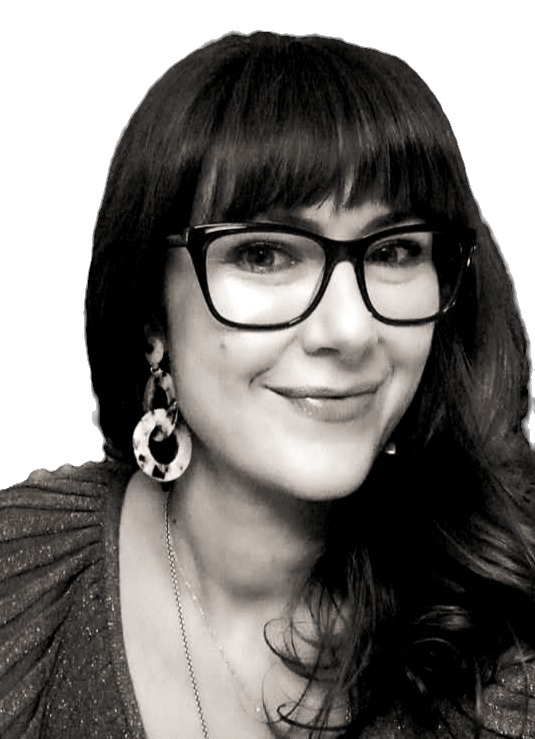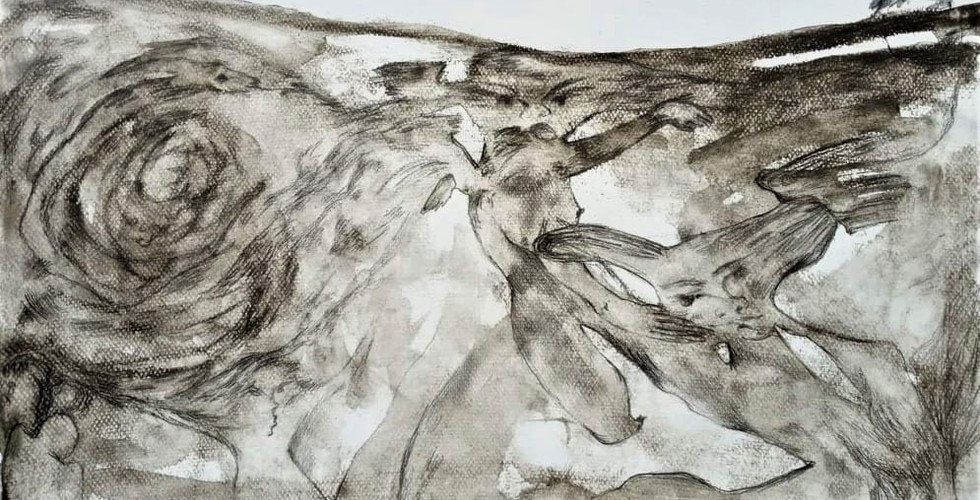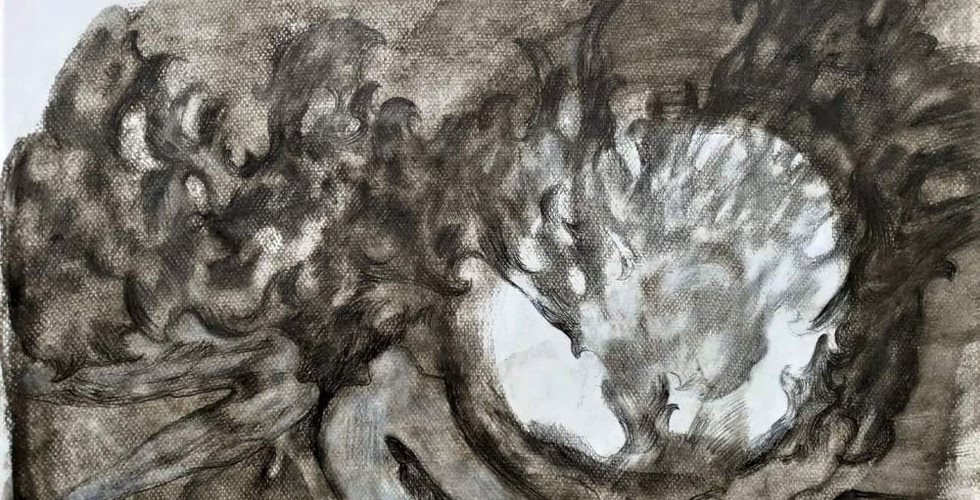3 Secrets about the art-making process + my creative process revealed
- Bianca Vinther

- Nov 28, 2022
- 9 min read
Updated: May 24, 2023
Discover the truth & 3 main secrets about the art-making process, and get an insider's view into one of my creative processes + 3 tips on how to be more creative in drawing
What’s your path to outcome with no outcome in mind?

In this blog post, I’ll explain the art-making process as a unique and nonlinear experience, as well as its subtle, unpredictable character, complexity, and nuances. In addition, I'll describe the first 2 stages of one of my most recent creative processes, and I’ll reveal to you my tried-and-true strategies for becoming more creative in drawing and making mind-blowing art.
To help you better understand your own creative process, I'll first discuss the art-making process in general as a continuum of momentums, occurrences, thoughts, deep reflections, actions, and a multiplicity of relationships between thoughts and actions that lead to ... tadaa, our unique artworks!
Second, I'll describe the 2 first stages of one of my latest art-making processes, when I found new inspiration and a completely new idea, and when I developed my initial idea and sketched frantically.
Also included in this blog post are an overview of my mediums and tools, as well as some helpful suggestions on how to be more creative in drawing and how to choose the right pencils and paper structures for you.
In a future blog post, I’ll explain the process of going from sketches to finished artworks – oil colours and acrylics on canvas. I'll also talk about the challenging task of experimenting, playing, and making a series of large format paintings for a forthcoming exhibition.
Discover my first steps on the path to outcome and beyond, with no concrete outcome in mind.

The truth and 3 main secrets about the art-making process
As the ancient adage goes, "all roads lead to Rome", there are many ways to make art and reach that golden milestone – paintings on the wall, sculptures on pedestals, installations in unconventional settings, or anything else. Fact is that there's no one-size-fits-all strategy to make art. In a never-ending loop, your creative route takes its own, unique and multidirectional course.
Taking a bird's eye view, the art-making process evolves over 3 major stages, which I discussed in one of my most popular blog entries to date, "What are the stages of the art-making process?". When examined moreclosely, however, the creative process reveals itself to be an intricated network of actions and deep thought moments that are per se not reproducible, i.e., they are unique to each individual in place and time. And this is precisely the truth, the undeniable essence of any art-making process!
This astonishing phenomenon entails a constant, occasionally discontinuous flood of thoughts and actions (in no particular order). It is a series of visible outcomes as well as an extraordinarily sophisticated web of invisible connections and actions that finally lead to actual products and create a relationship between artworks and their consumers.
In this entirely unpredictable, marvelously subtle, and most intricate process of making art, 3 secrets are hidden:
The creative process is not linear, in the sense that there's no clearly defined timeframe or sequence of thoughts and actions from conception to completion of artworks. Contrary to that, it is a non-sequential streams of ideas, emotions, uncertainties, possibilities, failures, and joyful moments of inspiration.
It includes both intentional and unintentional occurrences, choices, and actions;
It is an experience with tangible outcomes, as well as unaccounted-for periods of introspection, meditation, rest, and growth, which, in my opinion, are essential to any successful creative process, and culminate in the creation of the final artworks.
Do all roads lead to Rome? Do all our trials and errors, dead ends, and blind alleys lead us to that golden milestone? They absolutely do! Even if it does not appear to be so at first glance.
Experiments fuel your creative frenzy, abundant ideas and spontaneous actions broaden your possibilities, while failed attempts and plain bad works narrow down your path to Rome. They paradoxically straighten the road, shorten the agony of choosing, and bring you down the right way, whatever that may be in the end.
To move forward with your art-making process, you must love your errors and failed attempts, but that’s a topic for another blog post. Let's now have a peek at one of my most recent creative processes.

Initial stages of my creative process
Stage 1: How I found a sparkling idea and seized the creative impetus
This is when my art-making process was restarted after a long hiatus due to my family's relocating north – to Flensburg (Germany), to be precise. It all began spontaneously with a children's book I read to my daughter, which told a shortened version of the traditional Japanese tale "The Stones of Five Colors and the Empress Jokwa" under a different title.
This story triggered my first impulse; it piqued my interest and ignited my creativity. That was it, and I recognized it right away! As a result, I persevered and eventually located the original title and story, which I read twice. The novel compelled me to delve deeper into the plot and the richness of its symbols, which I mulled on for some time. I gave my idea time to grow, and it flourished bit by bit.
I seized that creative impetus as I gradually became immersed in the tale’s atmosphere. How did I do it? I simply put myself to work in my studio. Day after day, I used every second I could. No procrastination, no excuses, no other pressing obligations for a few hours spaced throughout the day in between online German lessons, picking up my daughter from school and getting her to her music, choir, and painting classes.
Do you have trouble coming up with the perfect idea for your next artwork? Or do you struggle to choose the greatest idea from a myriad of competing ones? Do you find it difficult to feel that initial instinct, momentum, flash of inspiration, or urge to create?
Do you have trouble coming up with the perfect idea for your forthcoming artwork? Or do you give in to the demands and pressures of your patrons and gallerists, obsessing over becoming more productive?
Then read Rob Walker's The Art of Noticing and seriously consider one of his brilliant bits of advice: produce less and don't become obsessed with increasing your output. Pace your productivity. Space it out. Contemplate, observe, and be more curious instead. That will spark your creativity because being more curious and observant will lead to more creativity. Productivity will will inevitably follow.
“A hyper effective schedule designed to maximize productivity is in fact, more likely to distract you from what’s important than help you discover it.” (Rob Walker)
Scoop energy from a variety of sources, then take a break and wait. Because the true origins of any art-making process are found in the process of observing, wondering, pausing, and being patient.
What about your art-making process: does it start with an idea, an intention, an impulse, or the creation of your artworks?
Stage 2: How I sketched and set my creativity free
My idea and practice of working on numerous papers at the same time stem from my years of drawing and painting in art school. Therefore, I began with a group of five or six papers at once.
I used my fingers, a few brushes, a bit of water here and there, and a tiny intervention of my kneaded eraser to "animate" the surface of my sheets after coating them with a layer of charcoal. By the way, you can use this strategy to overcome blank page anxiety (if you're one of its victims).
I began applying the charcoal with no particular outcome in mind and had no idea how it would turn out. However, thanks to the hazardous intervention of the charcoal, I gradually noticed shapes emerge from the "enlivened" surface of the paper. This wonderful material provided plenty of ideas that I could use to develop meaning around my initial idea.
Here comes the wonder of process and intuitive art: the forms that emerged fit perfectly into the plot of my ancient Japanese story! See below by clicking on the right upper corner of the first image displayed. A larger selection of these works can be found on my Instagram profile, @the_pointless_artist.
Alternatively to coating the papers with fine art charcoal, I used decalcomania. This technique helped me to transfer arbitrary forms and random patterns onto my papers, which I subsequently tweaked or enhanced.
Decalcomania allowed the shapes that resulted to adopt whatever configurations were determined by the interaction of the wet glass surface sprinkled with ink and the paper.
I worked frantically. I drew sketch after sketch, whether it was in my studio during those lovely moments of inner peace and silence, at my daughter's music school, at the church where she attends her weekly choir class, or on the train every time I traveled to see my in-laws.
My choice of drawing tools and materials
I chose a set of pencils in grades ranging from hard (HB) to soft (6B). This enabled me to produce a wide variety of values, sharp contrasts, and, where appropriate, seamless tone transitions. Because the shine of graphite pencils bothers me, I usually use my favorite matte drawing pencils: Mars Lumograph black from Staedtler (which I've been using for almost 30 years!).
If you want to use dramatic contrasts like a pro, gradually increase the contrast. Begin with an HB pencil and then progress to a softer one for even more dramatic results. In this way, you'll be able to reduce the shine that some soft pencils produce (depending on the brand).
I chose a heavier texture paper because it is unquestionably more receptive to B pencils than a paper with lighter tooth, and it displays more of the surface texture when soft pencils are applied, which is one of the features of heavier papers that I adore.
Because I'm not a purist when it comes to making art, I like to experiment with many mediums. As a result, I added a great fine art charcoal (sepia, XL size) to my drawing supplied, as well as a kneaded eraser that I use sparingly to "animate" the surface of the paper or enhance the grayscale and the contrast of forms.
3 Tips on how to be more creative in drawing
Tip #1 - Try the decalcomania technique
I can't think of a better way to unleash creativity, create imagery by chance, and turn off the mind's control than the decalcomania technique. The paradox of decalcomania is that it allows you to find things rather than search for them while also giving you the chance to recognise forms, compositions, and relationships that may but must not necessarily fit with your past or present experiences and topics that you're thinking about.
Tip #2 - "Animate" your blank page
Give a blank, generally white surface some life before beginning to sketch on it, like I recently did. You can make it more appealing, exciting, and inspiring for you by applying a thin layer of fine art charcoal to the paper and then gently rubbing your fingers, brushes, pieces of cloth, or any other tool you can think of over the surface. You can also use a kneaded eraser on occasion.
Tip #3 - Draw inspiration from a botanical atlas
Nature is always close, but if you want to see the entire globe in a concentrated form, especially if you're a pattern freak like me, pick yourself a copy of Ernst Heckel's massive book The Art and Science, which is a brilliant collection of his botanical and artistic work. There are many amazing shapes and contrasts to be discovered there. Guarenteed!
A short recap
1. The process of creating art doesn't follow a straight line from a great concept to the completion of a body of work. It is not a one-way flow, as is commonly thought and inadequately defined, but a transformative experience of continuously changing and becoming with no beginning or end point. It is a play with ideas and an experiment with materials, critical reflections, emotions and feelings of doubt among other things. It is a series of conscious, deliberate or instinctive choices, backward and forward moves, falls back and innovations, and so much more.
2. The measurable and concrete actions we take in the art-making process are only stations along a line of invisible occurrences fueled by inner growth and slow, "extended" time.
3. Making art is an individual process; there's no one method that works for everyone. Each time, your creative path takes a new and unanticipated turn.
4. Never underestimate the value of materials in providing insight and assisting you in developing your initial concept further.
5. Seize the creative impetus, but don't rush towards the outcome. Gather energy from various sources, then take a break and wait. Because the genuine origins of any art-making process can be found in observing, pondering, resting, and being patient.
It's now time for me to move on to the next step of my current art-making process, which includes more research into the symbolism in my old Japanese story and the transfer of some of my best sketches onto canvas. It's also time for me to marvel at the wonder of metamorphosis, the process through which previously emerged shapes change into something new. To be continued in a future blog article.
Stay tuned, and hit subscribe if you enjoyed this contribution and would like to read more in the future about creativity in art, artist block, art insipiration, as well as about how to see and how to create like an artist.
Thank you for reading till the end. If you’ve got something to add, please comment on this blog post below, drop me an e-mail, or pm me on Instagram @the_pointless_artist. I'd love to hear from you!
Recognise your pointlessness and keep creating!
From Germany with love,
Bianca Vinther
What to read next
Do you want to learn more about the process of going from sketches to finished artworks like oil paintings and acrylics on canvas? Read my next blog post, which is also one of my most popular blog articles, "What are the satges of the art-making process?".












